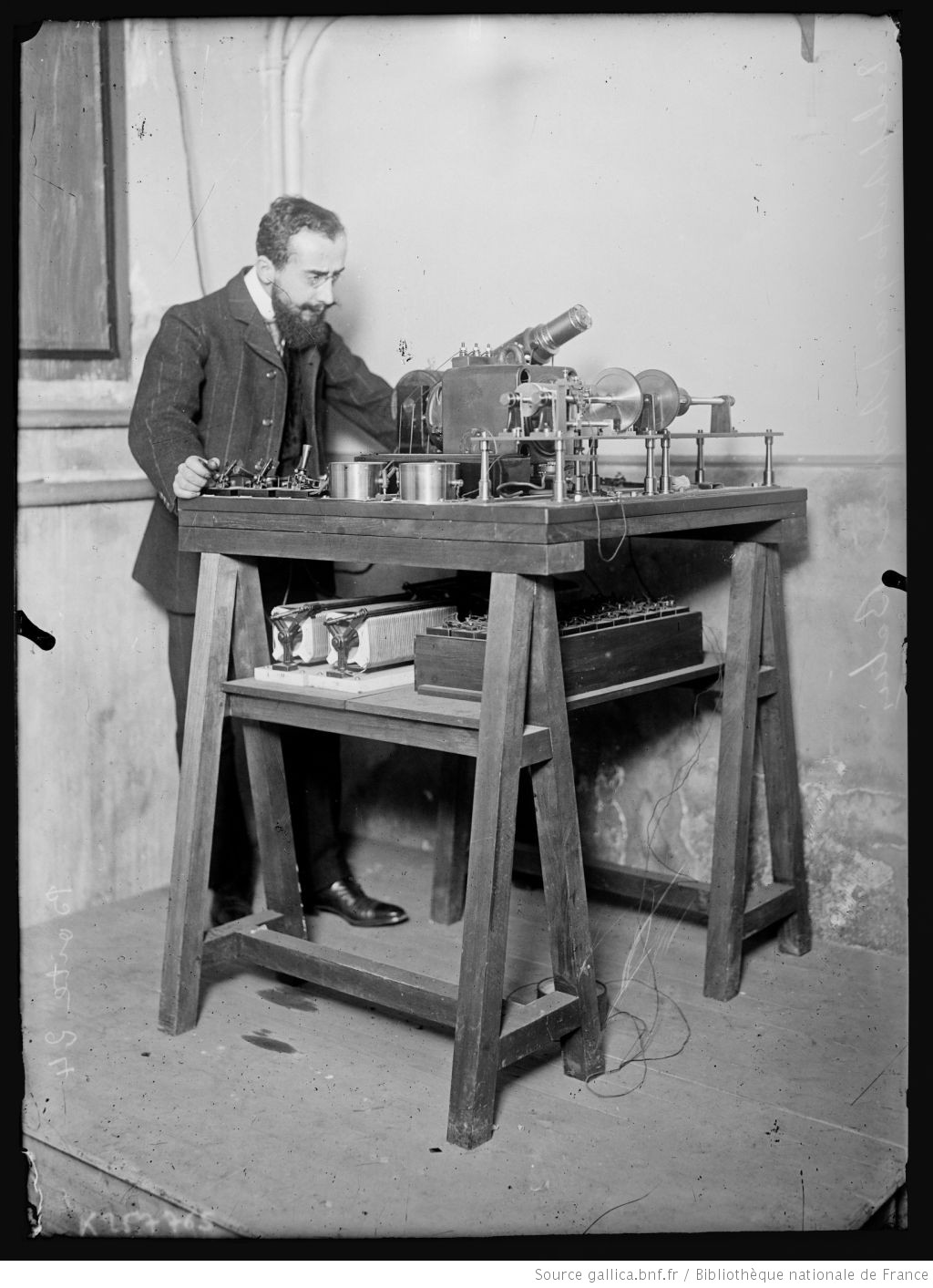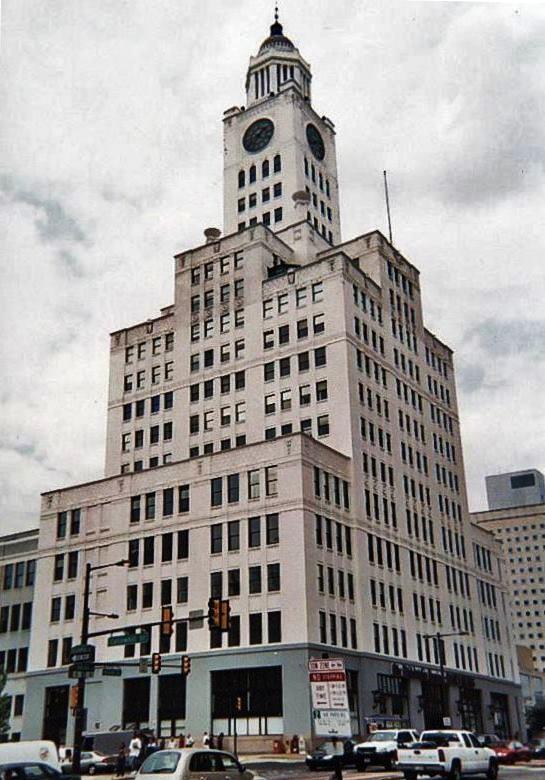|
Wirephoto
Wirephoto, telephotography or radiophoto is the sending of pictures by telegraph, telephone or radio. Édouard Belin's Bélinographe of 1913, which scanned using a photocell and transmitted over ordinary phone lines, formed the basis for the Wirephoto service. In Europe, services similar to a wirephoto were called a Belino. Western Union transmitted its first halftone photograph in 1921. AT&T followed in 1924, and RCA sent a ''Radiophoto'' in 1926. The Associated Press began its Wirephoto service in 1935 and held a trademark on the term ''AP Wirephoto'' between 1963 and 2004. The first AP photo sent by wire depicted the crash of a small plane in New York's Adirondack Mountains. Technologically and commercially, the wirephoto was the successor to Ernest A. Hummel's Telediagraph of 1895, which had transmitted electrically scanned shellac-on-foil originals over a dedicated circuit connecting the ''New York Herald'' and the ''Chicago Times Herald'', the '' St. Louis Republic'', the ... [...More Info...] [...Related Items...] OR: [Wikipedia] [Google] [Baidu] |
Photojournalism
Photojournalism is journalism that uses images to tell a news story. It usually only refers to still images, but can also refer to video used in broadcast journalism. Photojournalism is distinguished from other close branches of photography (such as documentary photography, social documentary photography, war photography, street photography and celebrity photography) by having a rigid ethical framework which demands an honest but impartial approach that tells a story in strictly journalistic terms. Photojournalists contribute to the news media, and help communities connect with one other. They must be well-informed and knowledgeable, and are able to deliver news in a creative manner that is both informative and entertaining. Similar to a writer, a photojournalist is a journalist, reporter, but they must often make decisions instantly and carry camera, photographic equipment, often while exposed to significant obstacles, among them immediate physical danger, bad weather, large crow ... [...More Info...] [...Related Items...] OR: [Wikipedia] [Google] [Baidu] |
Telegraph
Telegraphy is the long-distance transmission of messages where the sender uses symbolic codes, known to the recipient, rather than a physical exchange of an object bearing the message. Thus flag semaphore is a method of telegraphy, whereas pigeon post is not. Ancient signalling systems, although sometimes quite extensive and sophisticated as in China, were generally not capable of transmitting arbitrary text messages. Possible messages were fixed and predetermined and such systems are thus not true telegraphs. The earliest true telegraph put into widespread use was the optical telegraph of Claude Chappe, invented in the late 18th century. The system was used extensively in France, and European nations occupied by France, during the Napoleonic era. The electric telegraph started to replace the optical telegraph in the mid-19th century. It was first taken up in Britain in the form of the Cooke and Wheatstone telegraph, initially used mostly as an aid to railway signalling. Th ... [...More Info...] [...Related Items...] OR: [Wikipedia] [Google] [Baidu] |
Édouard Belin
Édouard Belin (5 March 1876 – 4 March 1963) was a French photographer and inventor. In 1907 Belin invented a phototelegraphic apparatus called the Bélinographe (télestéréographe)—a system for receiving photographs over telephone wires via telegraphic networks. Belin's invention had been used for journalistic photos since 1914, and the process was improved by 1921 to enable transmission of images by radio waves. From 1926, Belin worked on an television apparatus. In 1926, with Holweg, he tested the capacity for the eye to perceive pictures proposed at a very high speed, using a mirror drum. Belin was born in Vesoul, Haute-Saône, France, and died, aged 86, in Territet, Canton of Vaud, Switzerland. Bélinographe In this apparatus, the transmitter traverses the original image point by point. At each point a measurement of light intensity is made with an electric eye. The measurement is conveyed to the receiver. There, a variable intensity light source reproduc ... [...More Info...] [...Related Items...] OR: [Wikipedia] [Google] [Baidu] |
Telegraph
Telegraphy is the long-distance transmission of messages where the sender uses symbolic codes, known to the recipient, rather than a physical exchange of an object bearing the message. Thus flag semaphore is a method of telegraphy, whereas pigeon post is not. Ancient signalling systems, although sometimes quite extensive and sophisticated as in China, were generally not capable of transmitting arbitrary text messages. Possible messages were fixed and predetermined and such systems are thus not true telegraphs. The earliest true telegraph put into widespread use was the optical telegraph of Claude Chappe, invented in the late 18th century. The system was used extensively in France, and European nations occupied by France, during the Napoleonic era. The electric telegraph started to replace the optical telegraph in the mid-19th century. It was first taken up in Britain in the form of the Cooke and Wheatstone telegraph, initially used mostly as an aid to railway signalling. Th ... [...More Info...] [...Related Items...] OR: [Wikipedia] [Google] [Baidu] |
Analogue Electronics
Analogue electronics ( en-US, analog electronics) are electronic systems with a continuously variable signal, in contrast to digital electronics where signals usually take only two levels. The term "analogue" describes the proportional relationship between a signal and a voltage or current that represents the signal. The word analogue is derived from the el, word ανάλογος (analogos) meaning "proportional". Analogue signals An analogue signal uses some attribute of the medium to convey the signal's information. For example, an aneroid barometer uses the angular position of a needle as the signal to convey the information of changes in atmospheric pressure. Electrical signals may represent information by changing their voltage, current, frequency, or total charge. Information is converted from some other physical form (such as sound, light, temperature, pressure, position) to an electrical signal by a transducer which converts one type of energy into another (e.g. ... [...More Info...] [...Related Items...] OR: [Wikipedia] [Google] [Baidu] |
Chicago Times Herald
The ''Chicago Times'' was a newspaper in Chicago from 1854 to 1895, when it merged with the ''Chicago Herald'', to become the ''Chicago Times-Herald''. The ''Times-Herald'' effectively disappeared in 1901 when it merged with the ''Chicago Record'' to become the ''Chicago Record-Herald''. The ''Times'' was founded in 1854 by James W. Sheahan, with the backing of Democrat and attorney Stephen A. Douglas, and was identified as a pro-slavery newspaper. In 1861, after the paper was purchased by Democratic journalist Wilbur F. Storey, the ''Times'' began espousing the Copperhead point of view, supporting Southern Democrats and denouncing the policies of Abraham Lincoln. During the Civil War, General Ambrose Burnside, head of the Department of the Ohio, suppressed the paper in 1863 because of its hostility to the Union cause, but Lincoln lifted the ban when he received word of it. Storey and Joseph Medill, editor of the Republican-leaning ''Chicago Tribune'', maintained a strong rivalr ... [...More Info...] [...Related Items...] OR: [Wikipedia] [Google] [Baidu] |
Ernest A
Ernest is a given name derived from Germanic languages, Germanic word ''ernst'', meaning "serious". Notable people and fictional characters with the name include: People *Archduke Ernest of Austria (1553–1595), son of Maximilian II, Holy Roman Emperor *Ernest, Margrave of Austria (1027–1075) *Ernest, Duke of Bavaria (1373–1438) *Ernest, Duke of Opava (c. 1415–1464) *Ernest, Margrave of Baden-Durlach (1482–1553) *Ernest, Landgrave of Hesse-Rheinfels (1623–1693) *Ernest Augustus, Elector of Brunswick-Lüneburg (1629–1698) *Ernest, Count of Stolberg-Ilsenburg (1650–1710) *Ernest Augustus, King of Hanover (1771–1851), son of King George III of Great Britain *Ernest II, Duke of Saxe-Coburg and Gotha (1818–1893), sovereign duke of the Duchy of Saxe-Coburg and Gotha *Ernest Augustus, Crown Prince of Hanover (1845–1923) *Ernest, Landgrave of Hesse-Philippsthal (1846–1925) *Ernest Augustus, Prince of Hanover (1914–1987) *Prince Ernst August of Hanover (born 1954 ... [...More Info...] [...Related Items...] OR: [Wikipedia] [Google] [Baidu] |
Shellac
Shellac () is a resin secreted by the female lac bug on trees in the forests of India and Thailand. It is processed and sold as dry flakes and dissolved in alcohol to make liquid shellac, which is used as a brush-on colorant, food glaze and wood finish. Shellac functions as a tough natural primer, sanding sealant, tannin-blocker, odour-blocker, stain, and high-gloss varnish. Shellac was once used in electrical applications as it possesses good insulation qualities and it seals out moisture. Phonograph and 78 rpm gramophone records were made of it until they were replaced by vinyl long-playing records from 1948 onwards. From the time it replaced oil and wax finishes in the 19th century, shellac was one of the dominant wood finishes in the western world until it was largely replaced by nitrocellulose lacquer in the 1920s and 1930s. Etymology ''Shellac'' comes from ''shell'' and ''lac'', a calque of French , 'lac in thin pieces', later , 'gum lac'. Most European langua ... [...More Info...] [...Related Items...] OR: [Wikipedia] [Google] [Baidu] |
New York Herald
The ''New York Herald'' was a large-distribution newspaper based in New York City that existed between 1835 and 1924. At that point it was acquired by its smaller rival the ''New-York Tribune'' to form the '' New York Herald Tribune''. History The first issue of the paper was published by James Gordon Bennett Sr., on May 6, 1835. The ''Herald'' distinguished itself from the partisan papers of the day by the policy that it published in its first issue: "We shall support no party—be the agent of no faction or coterie, and we care nothing for any election, or any candidate from president down to constable." Bennett pioneered the "extra" edition during the ''Heralds sensational coverage of the Robinson–Jewett murder case. By 1845, it was the most popular and profitable daily newspaper in the United States. In 1861, it circulated 84,000 copies and called itself "the most largely circulated journal in the world." Bennett stated that the function of a newspaper "is not to ... [...More Info...] [...Related Items...] OR: [Wikipedia] [Google] [Baidu] |
Philadelphia Inquirer
''The Philadelphia Inquirer'' is a daily newspaper headquartered in Philadelphia, Pennsylvania. The newspaper's circulation is the largest in both the U.S. state of Pennsylvania and the Delaware Valley metropolitan region of Southeastern Pennsylvania, South Jersey, Delaware, and the northern Eastern Shore of Maryland, and the 17th largest in the United States as of 2017. Founded on June 1, 1829 as ''The Pennsylvania Inquirer'', the newspaper is the third longest continuously operating daily newspaper in the nation. It has won 20 Pulitzer Prizes . ''The Inquirer'' first became a major newspaper during the American Civil War. The paper's circulation dropped after the Civil War's conclusion but then rose again by the end of the 19th century. Originally supportive of the Democratic Party, ''The Inquirers political orientation eventually shifted toward the Whig Party and then the Republican Party before officially becoming politically independent in the middle of the 20th centu ... [...More Info...] [...Related Items...] OR: [Wikipedia] [Google] [Baidu] |
Boston Herald
The ''Boston Herald'' is an American daily newspaper whose primary market is Boston, Massachusetts, and its surrounding area. It was founded in 1846 and is one of the oldest daily newspapers in the United States. It has been awarded eight Pulitzer Prizes in its history, including four for editorial writing and three for photography before it was converted to tabloid format in 1981. The ''Herald'' was named one of the "10 Newspapers That 'Do It Right' in 2012 by '' Editor & Publisher''. In December 2017, the ''Herald'' filed for bankruptcy. On February 14, 2018, Digital First Media successfully bid $11.9 million to purchase the company in a bankruptcy auction; the acquisition was completed on March 19, 2018. As of August 2018, the paper had approximately 110 total employees, compared to about 225 before the sale. History The ''Herald'' history can be traced back through two lineages, the '' Daily Advertiser'' and the old ''Boston Herald'', and two media moguls, William Randolph ... [...More Info...] [...Related Items...] OR: [Wikipedia] [Google] [Baidu] |
Trademark
A trademark (also written trade mark or trade-mark) is a type of intellectual property consisting of a recognizable sign, design, or expression that identifies products or services from a particular source and distinguishes them from others. The trademark owner can be an individual, business organization, or any legal entity. A trademark may be located on a package, a label, a voucher, or on the product itself. Trademarks used to identify services are sometimes called service marks. The first legislative act concerning trademarks was passed in 1266 under the reign of Henry III of England, requiring all bakers to use a distinctive mark for the bread they sold. The first modern trademark laws emerged in the late 19th century. In France, the first comprehensive trademark system in the world was passed into law in 1857. The Trade Marks Act 1938 of the United Kingdom changed the system, permitting registration based on "intent-to-use", creating an examination based process, an ... [...More Info...] [...Related Items...] OR: [Wikipedia] [Google] [Baidu] |








